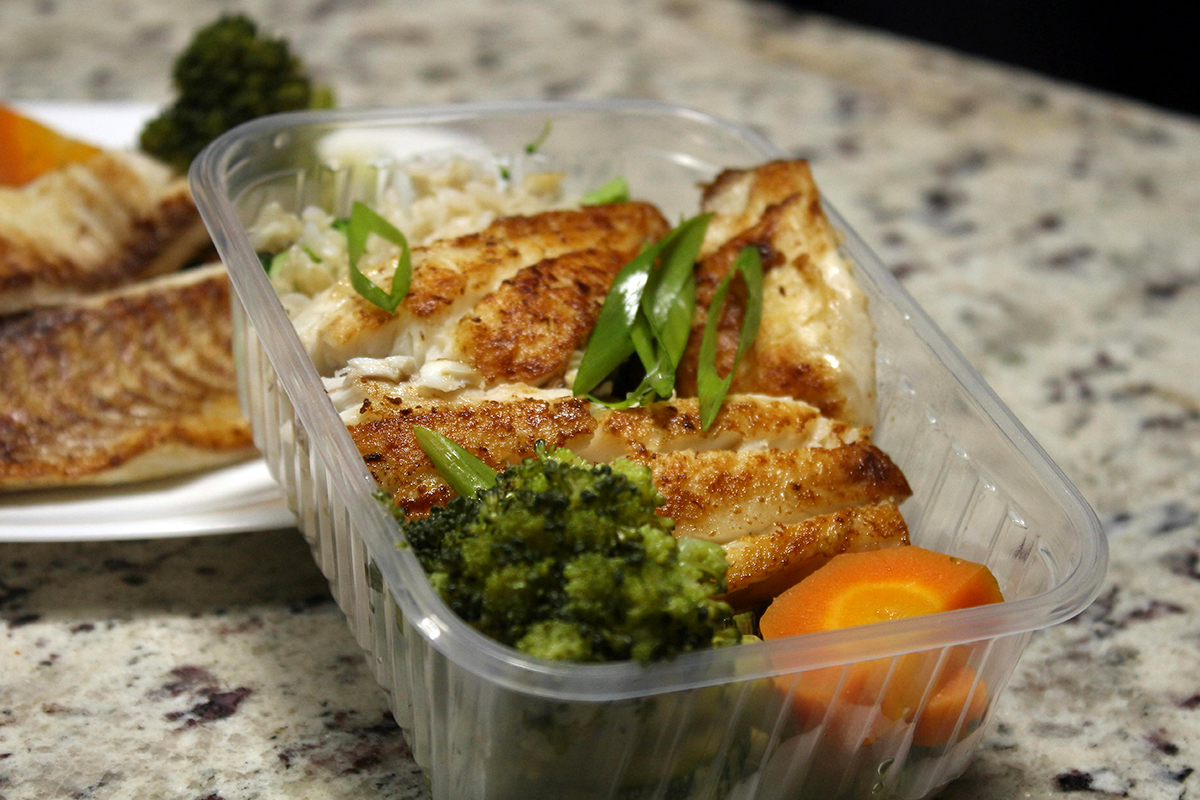There is nothing in the world of nutrition more confusing than ultra-processed foods. Seemingly every week, there is a new headline about the dangers of ultra-processed foods and their links to things like heart disease, dementia, and death. Articles ask things like, “How can I spot an ultra-processed food?”
On the flip side, there are plenty of people who will claim this is overblown. Making this more confusing, there are foods that seem designed for health that fall into this category.
For example, protein powder. Getting enough protein is all the rage these days. People are trying to hit 100 grams of protein a day, or more. This is actually not that easy to do; it is made a lot easier with protein powder. As a result, you see many people who appear quite healthy consuming these products daily. But these are ultra-processed! So maybe you should avoid them? But then, how exactly are you going to get those 100 grams of protein?
This brings up the more general question: What exactly is the concern here? Is the processing itself a problem? Or the nutrient profile? The whole discourse is a mess, and it’s especially problematic for parents, since a lot of the foods our kids love (nuggets, mac and cheese) are in this category. Are we ruining them?
This whole thing is much, much more understandable with information and data. So let’s take a look.

What is ultra-processed food?
The idea of “ultra-processed foods” comes from a system called the NOVA classification, developed in 2009 by researchers in Brazil. This group proposed that foods be classified in four categories:
- Unprocessed or minimally processed: foods that are either unprocessed or have undergone only minimal processing, like crushing or freezing. Think eggs, milk, plain fruits and vegetables, plain yogurt, and spices.
- Processed culinary ingredients: foods derived from Group 1 foods through simple processes, i.e., butter, olive oil, salt, sugar. This group is mostly seasonings.
- Processed foods: “simple food products” made by combining Group 1 and 2 ingredients. Things like cheese and bread, salted nuts, and dried fish.
- Ultra-processed foods: foods that are made with industrial processing techniques, often involving the addition of products that are not in Groups 1 or 2 or have no particular nutritional value.
What group any individual food is in is not always obvious. In writing this, I got curious about whether my favorite snack, Chomps turkey sticks, are considered ultra-processed. I wasn’t able to get a straight answer; Reddit seems to think no, but there was some confusion. In general, you cannot find a list of these foods. When researchers classify foods into categories, they do it by hand or with some machine-learning approaches.
What is it about ultra-processing specifically?
This is a core question. Why are we focused on ultra-processing in particular?
The idea for the classification came out of observations by the researchers that there was a link between health and eating patterns in Brazil and, in particular, a diet heavy in foods that were highly processed appeared to be linked with worse health outcomes. The researchers wanted a way to summarize these dietary patterns that would be amenable to analysis, so they came up with this system.
This classification has been widely used for research, probably because it’s fairly simple to understand and because some kind of classification like this is necessary to do research on diet. There is a lot of interest in linking dietary patterns to health outcomes. If you want to do research on that topic, you need a way to define healthy versus unhealthy diets.
The problem is that healthy diets can be a little bit like what a Supreme Court justice once said about pornography: “I know it when I see it.” In other words, if I showed you two diets, you could probably tell me which one you thought was “healthy,” but actually translating that to data is tough. There are a lot of ways to do this, and what researchers really like is a way that other people have also used because then it’s easy to defend your own use. This NOVA classification started getting used, and then it became the classification.
The reality is that this grouping is one of various approaches that might have been roughly equivalent. The share of a diet that is made up of ultra-processed foods is positively correlated with sugar and fat in the diet and negatively correlated with vegetable and fruit consumption. There are nutrient-based indices, like the USDA’s Healthy Eating Index, that are also very highly correlated. The fact that the index that has become popular is focused on the processing nature of the food is almost accidental. You could have focused on sugar content or the amount of vegetables in the diet and classified individuals in almost exactly the same groups.
In fact, there may be nothing special about the processing part of the ultra-processing. If the classification had been organized differently, we might be more focused on sugar or something else.
Why is (most of) the data on ultra-processed foods flawed?
There is a tremendous amount of correlational evidence that the share of the diet made up of ultra-processed foods is associated with poor health outcomes. Here is one meta-analysis (there are many similar ones) of studies that compares health for people who eat more versus less ultra-processed food.
Higher consumption of ultra-processed foods is associated with obesity, cardiovascular disease, dementia, mental health, and mortality, among other things. Pretty much any bad health outcome you can identify, it’s more common if you eat more ultra-processed foods.
There are two core issues in interpreting these data. First, going back to the discussion above, there is really no reason to think that the problem is necessarily processing. You’d see these correlations with different ways to measure a healthy diet.
Second, it is difficult or impossible to separate out correlation and causation. Consumption of a higher share of ultra-processed foods is associated with lower income, less education, less exercise, more smoking, etc. It is difficult or impossible to separate these other factors from food. In fact, the motivation for developing the NOVA classification was an observation about differences in diet and health between socioeconomic groups in Brazil.
My bottom line is that I really do not think we can learn anything, either worrisome or reassuring, from these studies.
Are there any good studies about ultra-processed foods?
Although most of the literature on ultra-processed foods is not good, there are a couple of studies that I would call out as extremely informative, which I think is the key to understanding a lot of the data.
The first is a randomized study of 20 individuals who were brought into an inpatient ward. They were randomized into one of two diets: one that was focused on ultra-processed foods and one that was focused on less-processed foods. All meals were provided, and the total calories and macronutrients were matched, meaning the two groups were each provided the same number of calories per day, with a similar mix of carbohydrates, fat, and protein. The researcher measured how many calories they actually consumed.
The study includes pictures of the diets. When looking them over, probably the most notable thing is the enormous difference in vegetables and fruit, which are more or less completely absent from the ultra-processed diet (minus some sad canned green beans). Also, the ultra-processed diet has an enormous amount of Diet Crystal Light with added fiber — up to five cups per meal, which I’m not sure what to make of. These images are actually a good illustration of one of the points above: if you looked at these meals, you’d find many, many ways to categorize their differences, processing being only one of them.
The core finding of the study is that people consume more calories — an average of 508 more per day — on the ultra-processed diet. That is an enormous difference, enough that they gained a notable amount of weight in the two-week study. It is not completely clear why, but there are at least two reasonable theories. One is that many ultra-processed foods are literally designed to make you want to eat more of them, so people may overeat. The second is that fruits and vegetables make you feel fuller because they contain a lot of fiber. Most of the ultra-processed fiber was in that diet lemonade additive, which people might not have consumed much of.
The additional data on hunger and fullness suggest that both groups felt similarly satisfied, which may be more consistent with the second story than with the overeating idea.
This study was run in a lab. A second study, published in 2025, did a similar analysis outside of the lab. Individuals were randomized to one of two diets, one of which was high in ultraprocessed foods and the other of which was not. Although they were not in a lab, food was delivered, and individuals consumed as much as they wanted. The researchers found that caloric consumption was higher when the foods provided were ultraprocessed, and people lost more weight on the minimally processed diet.
Both studies lead to a very simple conclusion. To the degree that there is a causal link with health, the problem seems to be that these foods encourage people to eat excessive calories. That excess consumption of calories puts people at risk for cardiovascular disease and other health complications. This is the sense in which this category of food is problematic.
Closing thoughts
First, let’s think about your own dietary perspective (and your kids’). There is no issue per se with food that has been processed. If you want to consider it at all, perhaps remember that when you open a large bag of Doritos, they are designed to have you eat them all. Another point: fiber, found in fruits and vegetables mostly, is good for you and your kids. As much as it is possible to incorporate them in your meals, do it!
Second, how do you process new headlines? My advice: don’t. I promise that within the next two weeks, you will see a headline saying ultra-processed foods have been linked to something bad. You do not need to read that article. You know everything you need to now. Go about your day in peace.
The bottom line
- “Ultra-processed” is really just one way to capture and characterize a particular dietary pattern, one that is (among other things) low in fruits and vegetables.
- To a large extent, the correlations between these dietary patterns and health are probably driven by other differences across people, including exercise, smoking, and health resources.
- However, there is causal evidence that these foods encourage consumption of more calories and, therefore, could contribute to obesity and related metabolic disease.




















Log in
I’ve actually been really curious about stevia – especially since, if I recall correctly, there was a recent report linking it to blood clots. I have an electrolyte supplement that really helps me with headaches but was devastated to see stevia on the non-medicinal ingredient list. 🙁
I feel like you didn’t read this if your take away is you can’t drink stevia anymore…
I’ve been so curious about the relationship between ulta-processed diets and vegan diets, since a lot of vegan foods are ultra-processed — eg. alternative meats, milks, cheeses, etc. There have been plenty of headlines lately about how plant-based diets are healthier, but I wonder what part these ultra-processed ingredients/foods play in those studies 🤔
I’m surprised Emily doesn’t mention industrially-processed seed oils, which are abundant in packaged foods and in restaurant cooking since they are so cheap. This is a food where it is the processing itself (heating at high temps) that oxidizes the oils, making them more inflammatory. There is research on seed oils, but Emily makes no mention of it.
The paper concludes that excessive calorie consumption is the root cause of the problem, but this is also an incomplete picture. Processing allows humans to consume specific compounds, like sugar, or omega-6 and omega-9 fatty acids in quantities far exceeding what we evolved consuming, which could very well be problematic independent of calorie differential.
Obviously there’s a lot of conflation between processed food and generally poor diets and lifestyles (no exercise,smoking, etc.), and eating processed foods clearly leads to extra calories, which lead to overweight and the health issues that come with that. BUT. Ultra-processed foods generally contain chemicals–and it seems entirely possible that consuming them in large numbers leads to health issues as well, especially metabolically. There can be no doubt that modern Western diet contributes to historically high rates of metabolic disease. Overweight, low-fiber, low-exercise all contribute, but maybe the not-really-food stuff does, too.
And it seems like you could test this by keeping calorie levels the same for the two groups in that study Emily mentioned, so that in fact the ONLY difference would be the food consumed. Weird that they didn’t!
Succinct and clear eyed in the face of so much noise on the topic.
One add: a lot of people underappreciate how much restaurant food is actually ultra-processed. Starbucks and Dunkin, most fast food chains, even the Whole Foods hot bar– look at the ingredient list at any of these places and they look a lot more similar to what you would see on the side of a Doritos bag than what you would get at a mom and pop diner.
For me, that realization combined with Emily’s point on encouraging overeating has made me more intentional on my “treats.” Less Starbucks cake pops, more locally baked chocolate chip cookies. Less Baskin-Robbins, more local custard stand. Those local places are also pricier, which limits my consumption of the fun stuff, which is also probably a good thing.
so is ultra-processed food ultra-processed because of ingredients or because of the “process”?
Thanks for the clarifications! So many posts on social media about this, while I kept wondering.. but what EXACTLY do they mean with ultra-processed??
On a different note: where do I sign up for receiving the non-processed diet? Even the slightly greyed out pictures still look amazing! Thanks from a tired mom of 2, who is missing her Fage-yoghurt (no longer available where I live) and who recently tried another veggie-filled ‘farmers box’ promising 15-30min recipes, which generally took thrice as long to make (without taking into account interruptions :’) #tangentdone
My thoughts exactly about the unprocessed menu. Sign me up!!